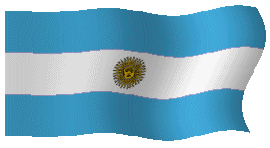
B"H
Jewish  Tours
Tours
 Buenos Aires, Argentina
Buenos Aires, Argentina
ARGENTINA, South American Federal Republic, general population (2004) 39,150,000; Jewish population 190,000.
With the founding of the Sociedad Hebraica Argentina in 1926, which was preceded by Juventud and other groups before the outbreak of World War I, and Organización Hebrea Maccabi, Jewish cultural life expanded in the Spanish-speaking sphere. The cultural achievements of Hebraica are mainly in the fields of sports, art, and drama (its luxurious theater was dedicated in 1968). Its quarterly Spanish magazine Davar, to which the best Argentinean writers have contributed, has published more than 100 issues.
With the organization and strengthening of AMIA, most of the Jewish community's cultural activities were concentrated under its auspices. AMIA also subsidized the activities of other organizations and publishing houses. A large number of books on Jewish subjects (particularly in Yiddish) were published in Argentina, but only a minority of them were written by local authors. There were also a considerable number of monthlies and weeklies published primarily by various political parties and economic, social, and philanthropic organizations. The Jewish daily press played a decisive role in the consolidation of the community Jewish life. Efforts to establish a Jewish daily newspaper in Spanish had failed for financial reasons and lack of interest among the Jewish population. The Juedische Wochenschau, a German-language weekly with a Zionist orientation, was published from the end of the 1930s by Hardy Swarsensky (publication ceased in 1968 with the death of its editor).
|
Visite nuestro sitio/Visit our home page: |